June 30, 2017
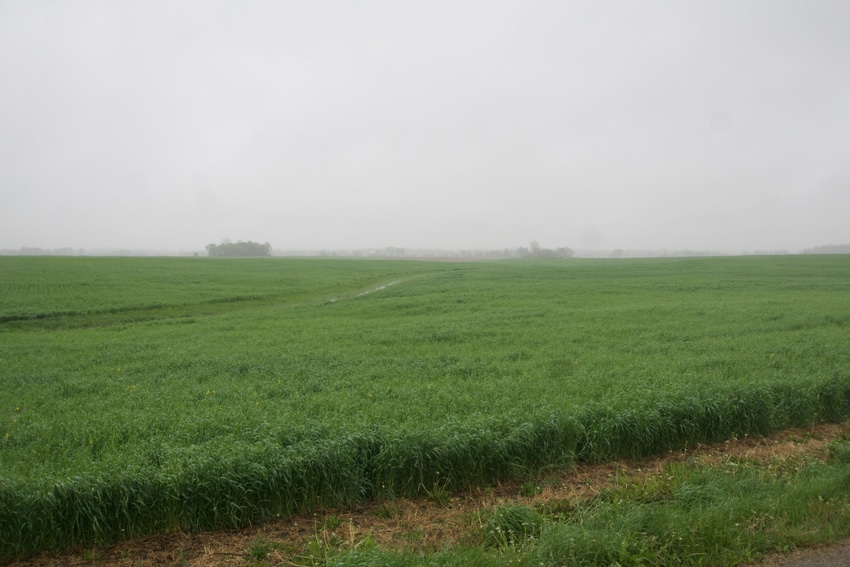
Kudos to the central Illinois family farm of Kirk and Tiona Kimble for capturing cool images of a four-inch rain event in late April – showing the differences between a field of cover crops and a conventional-tilled field.
Their comment when they sent me the photos: “We believe it’s a pretty good testament to the benefits of covers for erosion control! And it seems like we continue to face these huge rain events every spring, so we’re happy we adopted covers to build our soils and keep it in the fields.”
Some history:
The Kimble’s, who farm 2,100 acres from their base in Chillicothe, Illinois, began experimenting with cover crops seven years ago. Almost every acre over the past three years has been seeded to cover crops.
They don’t have any tillage equipment on the farm, and planting gets easier every year.
Now, we’ll let Tiona’s photos speak a thousand words…
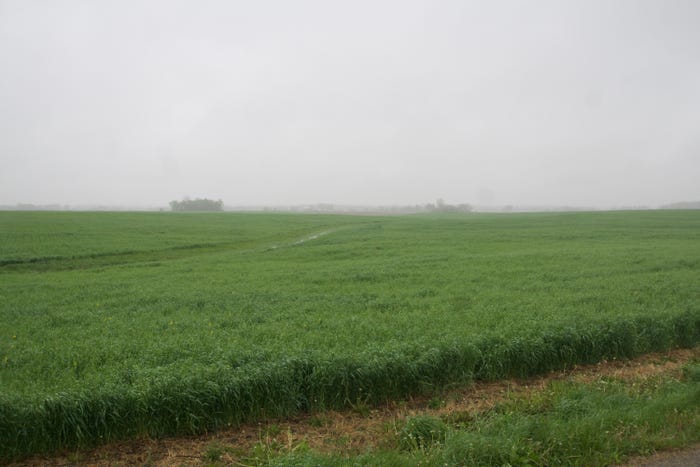
This soon-to-be soybean field is shown on April 30th, 2017, after a huge 4-inch rain event. A nice cover crop of cereal rye, seeded last October – holding all soil and water in the field.
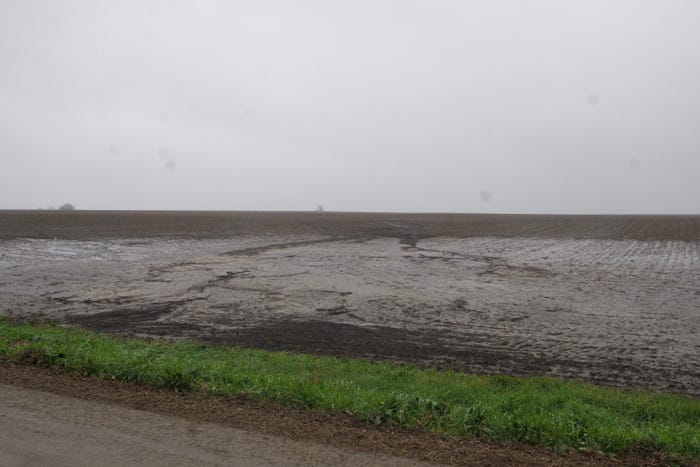
This conventional-tilled field, adjacent to Kimble’s field of cereal rye cover crop, shows extreme erosion – soil and water running into the ditch along the road.
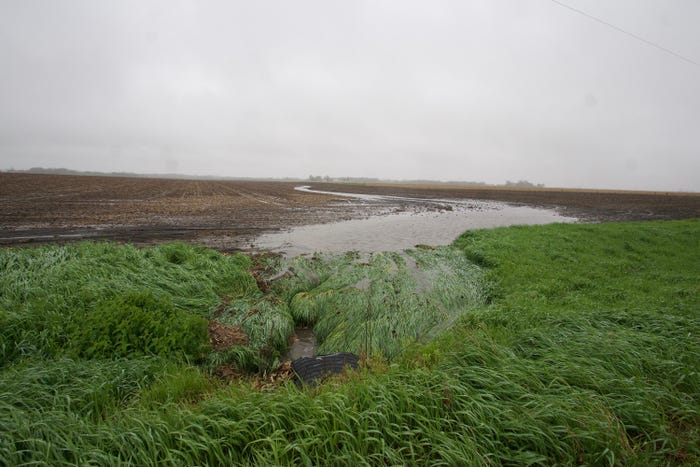
Same conventional-tilled field, with no grass waterway, shows a river of erosion flowing into the ditch, filling a culvert.
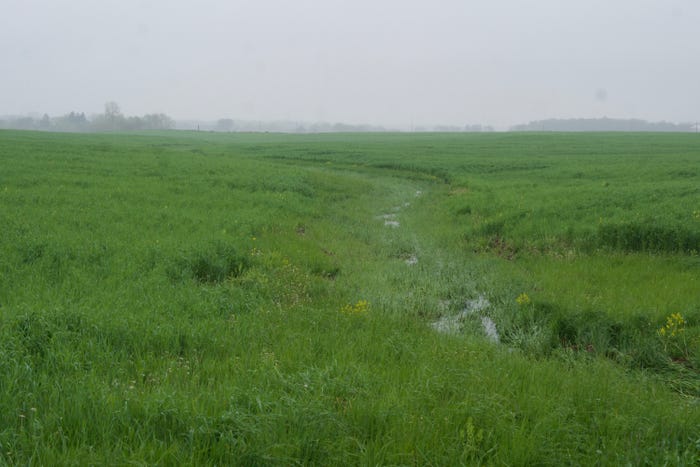
Back to cover crop field, with a grass waterway, that shows a small amount of water standing in the waterway.
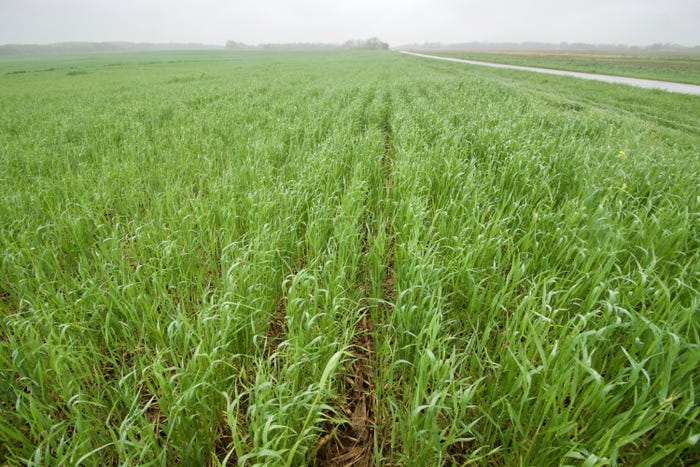
A look down the 70 lb./acre, 15-inch drilled rows of healthy cover crop – just waiting to be sprayed and soybeans planted into it. Kimble said after 2 more inches of rain a week later, along with cold temperatures, forced him to spray only a day before planting and seed into the cover crop mat, which worked better than he expected.

Not only is this erosion bad for water quality, the soil loss costs farmers current and future bushel loss across an entire field.
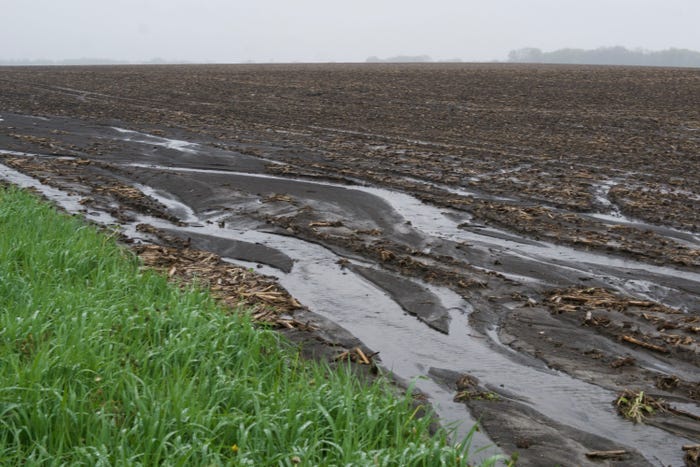
These erosion channels move water and soil particles even faster during these more frequent huge rainfall events each spring.

Kimble said he found this Mallard nest full of eggs as the cover crop was dying back. Yet another environmental bonus for this cereal rye.
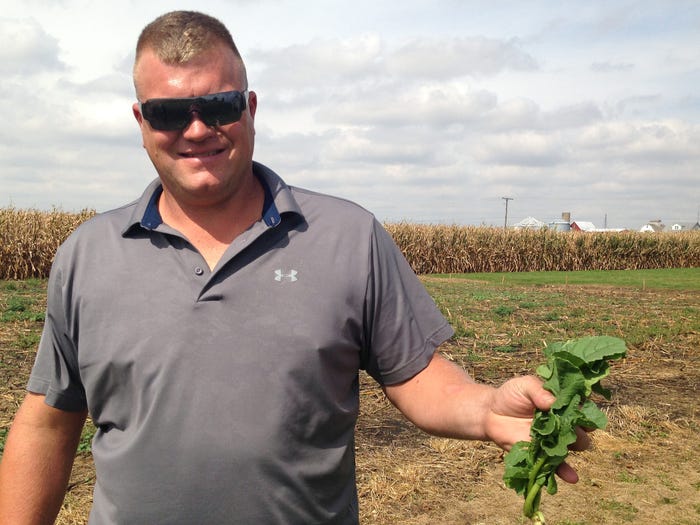
Kirk Kimble exhibits other cover crops during his Soil Health Partnership field day, working with NCGA to help educate other area farmers on the values of soil health
About the Author(s)
You May Also Like






